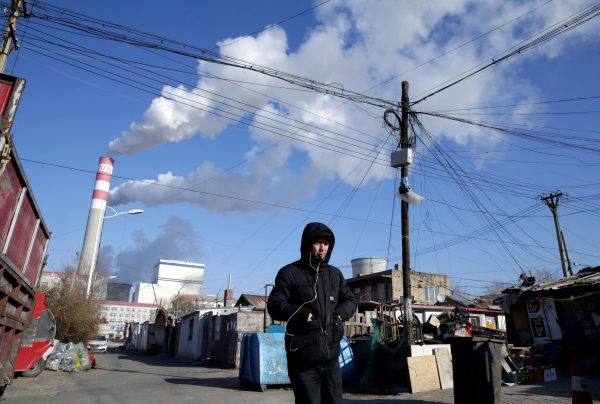Reducing reliance on coal power will be a major challenge because of its stability as a baseload power source, the relatively young age of China’s coal-fired powerplants, and the country being the largest producer, importer and consumer of coal.
But China’s motivation and ability to shift energy usage away from coal should not be underestimated, as accelerating reforms have shown. Recent coal industry reports coinciding with the gradual release of details from the 14th Five Year Plan confirm that radical restructuring is underway and carbon neutralisation is being rapidly integrated into China’s overall development plan.
State-owned companies carry out most coal mining and power production in China. The coal sector has been tackling overcapacity for a few years already. The number of coal mines shrunk from 12,000 in 2013 to 4700 in 2020, and employment in the coal mining and dressing industry has halved since 2013.
Mergers and acquisitions among state-owned coal mining companies have been encouraged. In 2017, Beijing approved the merger of coal company Shenhua Group with one of the nation’s big five state-owned power generators, China Guodian Corporation. The goal of such mergers and acquisitions is not to expand coal production capacity in China but to enhance cost effectiveness and efficiency.
According to a recent report by the China National Coal Association, ten super-large coal enterprises will emerge out of the consolidation in the next five years, each with an output of 100 million tonnes. Annual coal production will be controlled at a level of 4.1 billion tonnes by the end of the 14th Five Year Plan, compared with 3.9 billion tonnes in 2020. These mergers will allow China to improve national energy efficiency and increase the concentration of power generation.
Besides limiting production expansion and increasing efficiency, China is also slowing down coal consumption. As the government intensifies its war on pollution, the cost advantages of coal as an energy source will gradually shrink. Unlike most other developing countries, China has over the last decade established regulations and regulatory bodies down to the township-government level. This framework will help overcome the lack of enforcement and monitoring at the township level, with the central government forcing local leaders to make better decisions on natural resources usage, including coal.
China’s renewable energy industry is growing faster than capacity in fossil fuels and nuclear power generation. Booming industrial clusters have enabled China’s regional economic centres to emerge as world leaders in renewable energy and technologies such as electric vehicles. China is the world’s largest producer of solar and wind energy. In 2020, slightly less than 30 per cent of Chinese energy consumption came from non-fossil fuel output, including hydropower, wind, solar and biomass. By 2030, China plans to raise its minimum non-fossil fuel power purchase volume to 40 per cent.
Overseas Chinese mining investment is also transitioning away from thermal and fossil fuels to minerals relating to nuclear and renewable energy. In 2020, China Molybdenum acquired a 95 per cent stake in the Kisanfu copper-cobalt project in the Democratic Republic of Congo from US company Freeport. The deposit holds 6.3 million tonnes of copper and 3.1 million tonnes of cobalt. The acquisition will make China Molybdenum a top supplier of cobalt globally in the near future.
Ongoing frictions between Australia and China appear likely to impact seaborne coal shipments, as Chinese importers are somewhat reluctant to place orders for Australian thermal coal. Exports in 2020 were 199 million tonnes, declining by 6.1 per cent compared with 2019. Thermal coal exports to China were zero in January 2021, where average monthly exports were 4.5 million tonnes in the past.
For China, the gap left by Australian coal imports needs to be filled by other countries. Russia is planning to increase coal exports to Asia by 30 per cent, equivalent to 34 million tonnes a year. Canadian coal exports to China increased 18.3 per cent to 5.8 million tonnes in 2020.
China’s import volume of coal will likely drop over the next five years. China will control coal consumption at around 4.2 billion tonnes per year by the end of the 14th Five Year Plan. This means that by 2025, China’s annual coal imports may not exceed 100 million tonnes per year, compared with 304 million tonnes in 2020.
Most globally diversified producers continue to hold a small coal segment in their asset portfolio, while the thermal coal valuation gap is increasing relative to other precious and base metals. As countries around the world pursue decarbonisation and investors and banks pull away from thermal coal, divesting from thermal coal assets has become a clear agenda for almost all major mining companies.
Australian thermal coal exporters will likely face challenges when managing declining exports to China through diversification into Vietnam, India and other alternative markets. As two of the largest coal production countries in the world, Australia and China should increase bilateral exchanges to balance their transition plans as the coal industry declines and — most importantly — support the economic transition for coal communities.
Wei Li is a Lecturer in International Business at the University of Sydney Business School.
Dr Lei Zhang is the Chief Investment Officer of Yanzhou Coal Mining Company Ltd.

